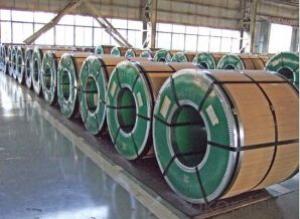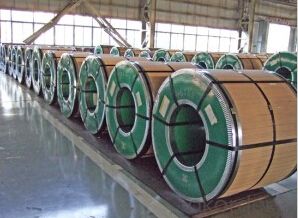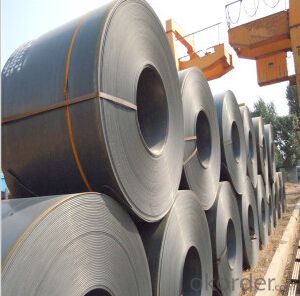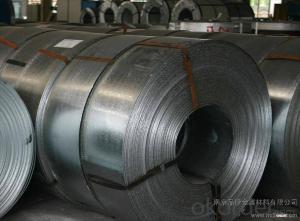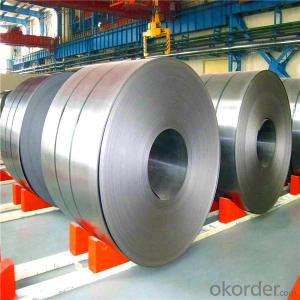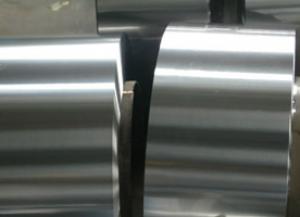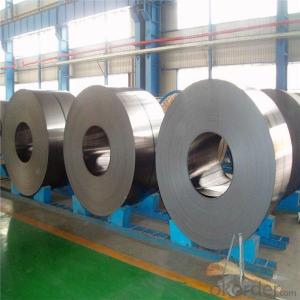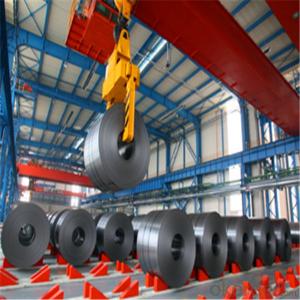Cold Rolled Galvanized Steel Coil for Construction
- Loading Port:
- Tianjin
- Payment Terms:
- TT OR LC
- Min Order Qty:
- 25 m.t.
- Supply Capability:
- 10000 m.t./month
OKorder Service Pledge
OKorder Financial Service
You Might Also Like
description:
Surface Treatment:Coated
Technique:Cold Rolled
Standard:ASTM, JIS, GB, AISI, DIN, BS
Steel Grade:Q195
Width:914, 1000, 1200, 1219, 1220, 1250
Export Markets:Global
Additional Info.
Trademark:STW
Packing:Sea Worthy Packing
Standard:0.2mm to 1.2mm
Origin:China
Production Capacity:10000 Tons Per Month
Product Description
Fit for world's standard (ASTM, JIS, EN)
Yeild strength: 235mpa to 550mpa
Width: From 600mm to 1250mm
Thickness: From 0.2mm to 1.2mm
Coating: AZ50, AZ100, AZ150
Other requirements fit for customer's demands
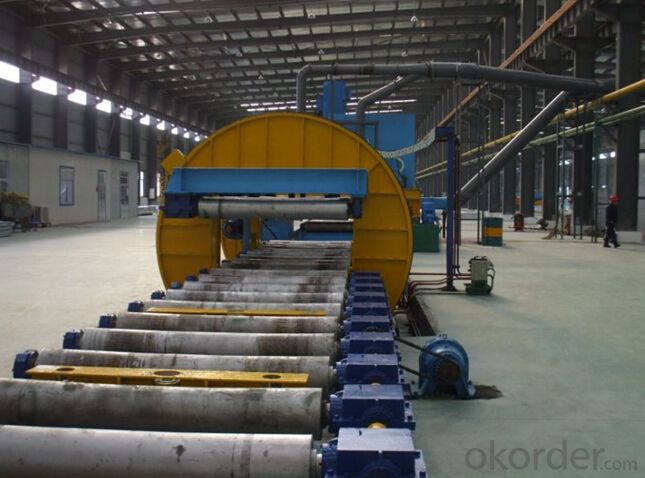
FAQ
1.What's your MOQ?
25MT, it is for one container.
2.Do you have QC teams?
Yeah, sure, our QC team is very important, they will keep the quality control for our products.
3. What's your normal delivery time?
Our delivery time about 10-20days for standard sizes, if you have other requirements like hardness and width ,it is about 20-40days. But don't worry ,we also try our best for the delivery time ,because time longer and our cost is higher.
4.Are the products tested before shipping?
Yes, all of our PPGI and GI was qualified before shipping. We test every batch every day.
- Q: How are steel coils used in the production of pipes?
- Steel coils are used in the production of pipes by being uncoiled and then passed through a series of forming and welding processes. The coils are flattened and shaped into the desired pipe size and then welded together to create a continuous length of pipe.
- Q: I work the Copper plating line at a custom plating facility in MI.I like to use jumper cables with the jumper cable clamps to help confirm electric current is getting to my parts that I am plating. The acids in the Acid copper is constantly eating the steel and copper clamps. WIll I get a good enough current through stainless steel clamps? I use stainless steel hooks, but our maintenance man thinks that is one of the reasons why I have prblems with my parts turning out. I still think it has to do with the clamps getting eatin up. My question is Is stainless steel as good or reliable enough to run an electrical current to my parts if I am using stainless steel or is it best to use another method to try and get a better connection.Please state your sources or experience with working with electricity. I need to get honest answers and not this is my opinion. We are talking about my making a living so this is important to me so I can bring food home to my table. Thanks for all the help.
- Stainless Steel Conductivity
- Q: How are steel coils used in the production of oil and gas equipment?
- Steel coils are used in the production of oil and gas equipment as they are shaped and formed into various components such as pipes, tubes, and fittings. These coils provide the necessary strength, durability, and corrosion resistance required for the harsh operating conditions in the oil and gas industry. Additionally, steel coils are often used in the fabrication of storage tanks, pressure vessels, and offshore platforms, ensuring the safe and efficient extraction, processing, and transportation of oil and gas resources.
- Q: How can I arbitrate quality of steel before purchasing it??
- The quality of the alloy can be very well be judged by its appearance and lustrous surface. The more luster on the surface the more refine will the steel be. To judge its tenacity and endurance, the alloy can be subjected to a series of procedures involving stress and shock. The reaction to these processes can determine whether the steel be fit for the purpose required.
- Q: I understand that Stainless Steel is a low carbon steel having minimum 10.5% chromium content in it there r 60 different type of stainless steel. Kindly informa) Is this info correct?????b) Which stainless steel can get rusted or can have superficial rust????
- Stainless steel is a generic term for a whole range (there are more than 60 types) of Fe-Cr alloys. They all contain some amount of C and some alloys include a good number of other alloying elements. In almost all cases, the materials have corrosion resistance due the Cr atoms that are in solid solution with the Fe matrix. Under corrosive conditions, the Cr forms a thin tight coherent layer of Cr-oxide. This Cr oxide coating prevents further corrosion so long as it is not chemically or physically removed. If the SS has been subject to mechanical abrasion, the corrosion resistance can sometimes be restored by a light exposure to nitric acid which passivates the surface, restoring the Cr-oxide layer. The carbon content is an important factor in corrosion preformance but so is the heat treatment. Under the wrong conditions and in different environments, all SSs can rust. One of the most common corrosion problems is sensitization which occurs in the heat affect zone (HAZ) around welds. If the C content is high enough and the heat is high enough, the Cr atoms in solid solution form Cr-carbides and are no longer available to form a protective Cr-oxide. The corrosion resistance can be restored by appropriate heat treatment.
- Q: How are steel coils used in the production of steel drums?
- Steel coils are used in the production of steel drums by being unwound and shaped into circular sheets. These sheets are then formed into the body of the drum, providing the necessary strength and durability.
- Q: steel can be used to do?
- I also know that jawaysteel this company, they're really good
- Q: Why do we galvanise steel? Galvanised steel is steel coated with zinc.
- The coating of zinc inhibits rust. First of all the zinc does not oxidize a readily as iron (steel). If the zinc coating gets scratched it still protects the exposed iron. When the zinc and exposed iron get wet they behave like a battery. Electrons flow from the zinc layer to the iron layer. The extra electrons in the iron layer replace any that might be lost to oxidation and help keep the iron metallic. Of course now the zinc oxidizes faster so eventually all of the metallic zinc is removed and the iron is unprotected and will rust. The fact that the zinc doesn't have to cover the steel is shown in another process. To protect the steel hulls of ocean going ships a block of zinc is attached to the bottom. The electrical circuit behaves as described above. When the zinc block has dissolved they just attach another one. If they keep this up the hull of the ship remains corrosion free. A tin coating on steel (as in a tin can) works just the opposite. When the tin is scratched the electrons flow from iron to tin so the iron rusts faster than it would have with no tin.
- Q: What are the different methods of coil slitting for precision cuts?
- Coil slitting, a process utilized for cutting large coils of material into narrower strips, is achieved through various methods that offer distinct advantages and suitability for different applications. 1. Rotary Shear Slitting, the most commonly used method, employs rotating circular knives to shear the material and create multiple strips. The distance between the blades can be adjusted to achieve the desired width. This method guarantees high precision with smooth and burr-free edges. 2. Drag Knife Slitting involves the use of a knife with a drag or tangential orientation that follows the material's contour and produces accurate cuts. It is ideal for materials with irregular shapes and finds application in the textile industry to cut fabrics. 3. Scissor Slitting utilizes two blades that move in a scissor-like motion to cut the coil. This method is commonly employed for thinner materials, providing excellent control and precision. It is ideal for materials prone to deformation or wrinkling. 4. Razor Slitting involves the use of a single or multiple razor blades positioned perpendicular to the material. It is particularly effective for cutting stretchy or delicate materials, minimizing the risk of tearing or deforming. 5. Crush Cutting applies pressure from a hardened steel roller or an anvil against a softer material, causing it to deform and split along the desired cutting line. It is suitable for materials that are challenging to cut with sharp blades, delivering precise and clean cuts. In conclusion, the choice of coil slitting method depends on the material, desired precision, and specific application requirements. Each method offers unique benefits and can be tailored to meet specific cutting needs, ensuring accurate and efficient coil slitting processes.
- Q: How are steel coils used in the manufacturing of automotive suspension systems?
- Steel coils are used in the manufacturing of automotive suspension systems as they provide the necessary support and resistance to absorb shocks and vibrations. These coils, also known as coil springs, are typically positioned between the vehicle's frame and the suspension system to enhance stability and ensure a smooth ride.
Send your message to us
Cold Rolled Galvanized Steel Coil for Construction
- Loading Port:
- Tianjin
- Payment Terms:
- TT OR LC
- Min Order Qty:
- 25 m.t.
- Supply Capability:
- 10000 m.t./month
OKorder Service Pledge
OKorder Financial Service
Similar products
Hot products
Hot Searches
Related keywords
